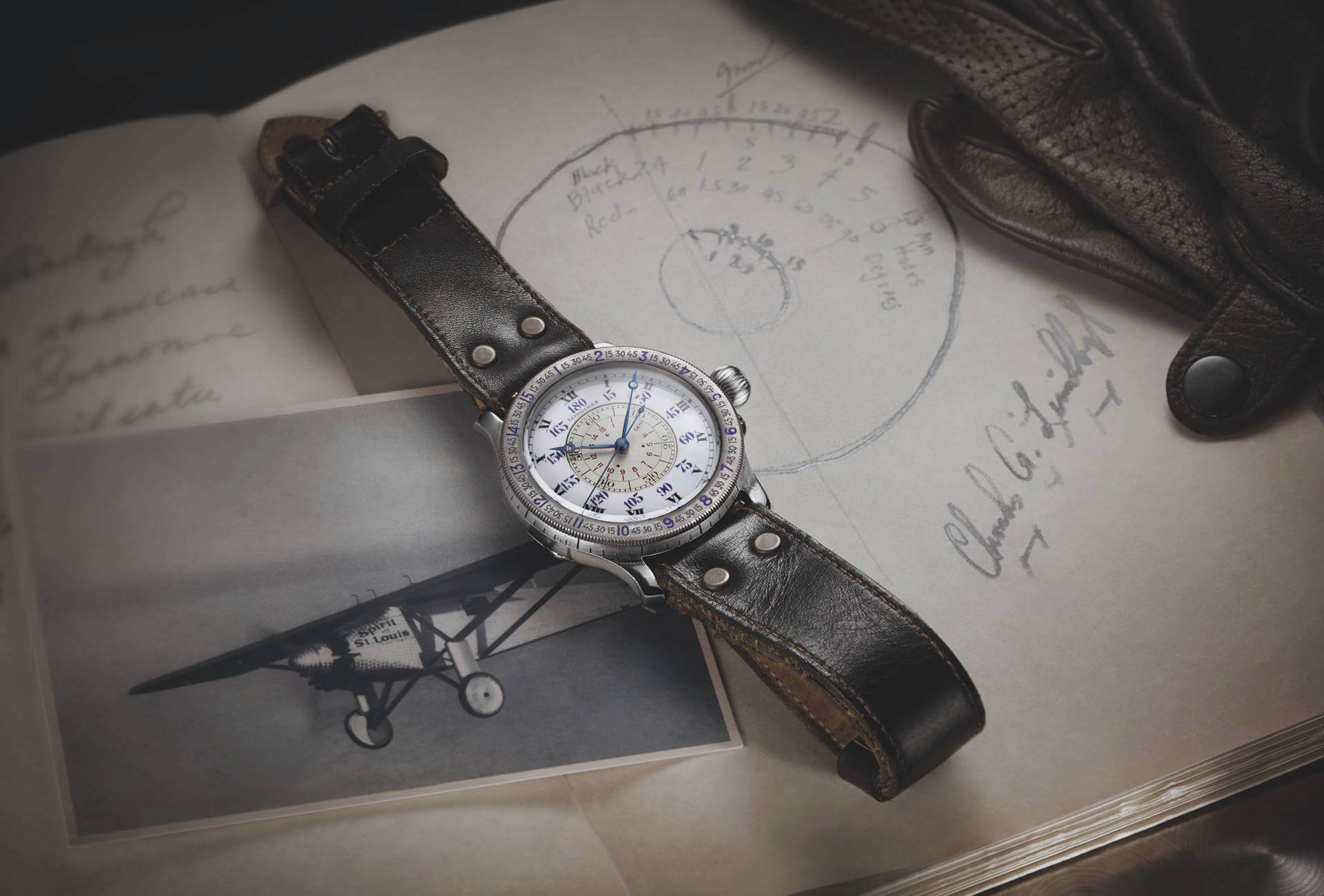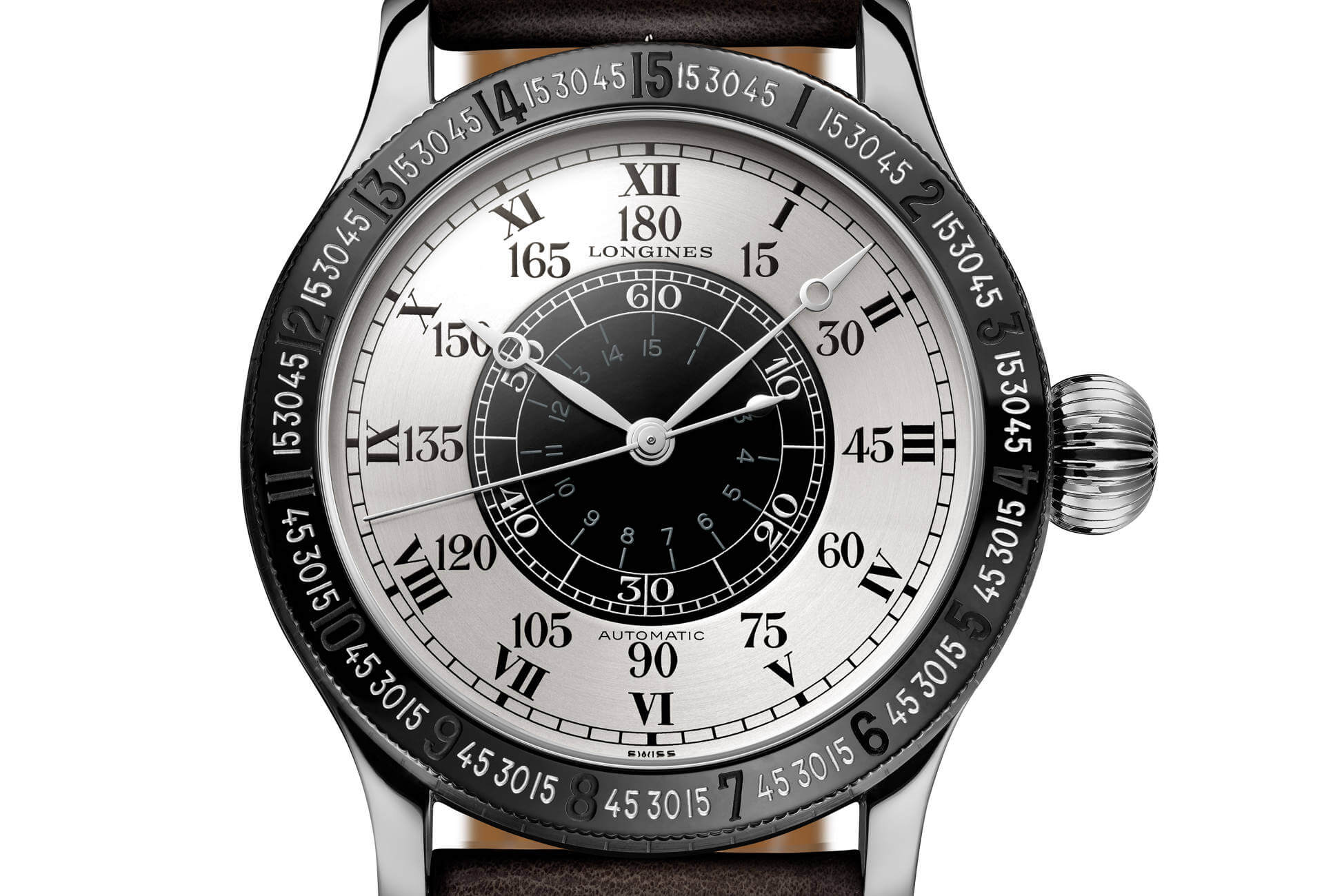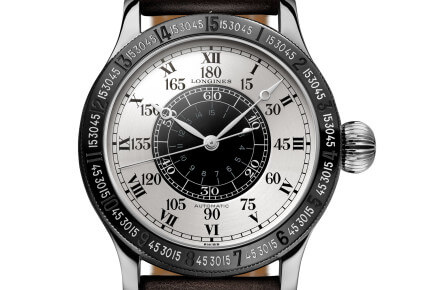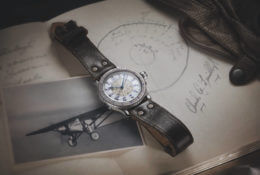It is worth remembering that, between 1920s and 1940, pilots – and even more so their onboard mechanics – used to calculate their position in terms of latitude and longitude using a sextant and a nautical almanac, exactly like sailors on ships. We often tend to forget that the almanac served to determine true solar time on a given day, and indeed still does for those not using GPS navigation. It is also important to recall that there is a difference between the mean time shown on a watch dial and the “true” solar time provided by the sun. This difference that varies over the course of the year is called “equation of time”. It is read off from day to day on a table featured in any nautical almanac, or at the tip of the dedicated hand of the rare watches equipped with such a complication (Panerai, Vacheron Constantin, Audemars Piguet or Breguet…).
Once true noon is determined (the sum of the mean time at the moment of measurement of the sun’s culmination, added to or subtracted from the equation of time of the given day), and the sun’s declination according to the day of the measurement is duly noted, the operator can take an angular measurement (called a “meridian”) using the sextant to measure his latitude. It is important to emphasise that multiple measurements are useful in order to minimise risks of calculation errors, since the motion of the aircraft or boat can lead to read-off mistakes that will be averaged out by a mean calculation.
Practical example of latitude calculation
Let’s suppose an equinox day in the Northern Hemisphere: the observer is on a point along a 90° arc running from the Equator to the Pole. When the sun, which follows an East-West trajectory, appears full South, it is considered as culminating on the meridian of the Northern Hemisphere. If the height measured using the sextant amounts to 35° in relation to the horizon, the latitude of the observer corresponds to the complementary angle of this measurement to form a full 90°: i.e. a latitude of 55° North.

Once the latitude has been estimated, an operator must measure longitude in order to use the two coordinates to determine his position. To calculate the local hour angle or longitude, calculations stemming from the field of spherical trigonometry and now available in dedicated manuals, observers must be able to compare solar time in their own location with the reference time, which is normatively established as that of the Greenwich Meridian (UTC or Coordinated Universal Time). The hour measurement thus obtained, transposed into degrees, minutes and seconds, serves to calculate the point of longitude where the navigator finds himself.

Longitude in figures
The calculation is simple: each hour of difference between the reference time (Greenwich) and the hour measured (local) corresponds to 15°. Every four-minute period elapsed corresponds to 1° of the arc. Each second elapsed corresponds to a distance of 450 metres. And 60 seconds elapsed correspond to 15 minutes of arc (15 minutes of arc amount to a ¼ degree of longitude and 1° of longitude to 60 minutes of arc).
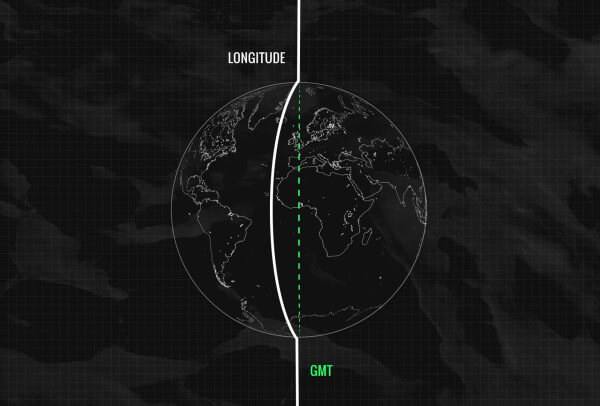
Handling a Longines Hour Angle watch
First and foremost, the wearer of an Hour Angle watch should note that in order for it to be useful and efficient, the model will need to be set to Greenwich Mean Time, like marine chronometers. The hour signal transmitted by long-wave radio stations will serve to ensure perfect synchronisation to the nearest second between the time shown on the watch and that of Greenwich.
In the absence of a stop-seconds and zero-set mechanism for the sweep seconds hand, Longines watchmakers have opted for an internal dial rotating in both directions (based on the Weems patent), enabling the operator to set the sweep seconds hand to precise seconds graduations without affecting the running of the watch.
At the exact time of the last hour beep transmitted by the radio, the seconds hand must be placed on the “60/15 graduation of the central dial. Mechanical watches are sensitive to vibrations, and those that are not protected from magnetic radiation may vary in terms of precision. Hence the need to regularly reset the time in order to ensure the most accurate possible measurements.

Time in the location instead of true noon
Once the correct Greenwich Mean Time is displayed on the dial, the observer must proceed to measurement of solar noon in his given location. This operation is done using a sextant. To perform a correct measurement so as to accurately determine his position in terms of longitude, it is vital to know at which time the sun will reach its culmination in Greenwich (including the equation of time difference). This information can be found in all nautical almanacs.
All the wearer of the Hour Angle watch need then do is to estimate the time when the sun will reach its culmination in his current location. At the right time, he will then take a series of measurements with his sextant so as to precisely determine the culmination of the sun. This point corresponding to noon for him must then be matched with the Greenwich time shown by his watch. The difference between the two times corresponds to a point in terms of degrees, minutes and seconds that will then be carried over onto the previously measured or known line of latitudes. The sum of latitude and longitude measurements corresponds to the observer’s instant position.
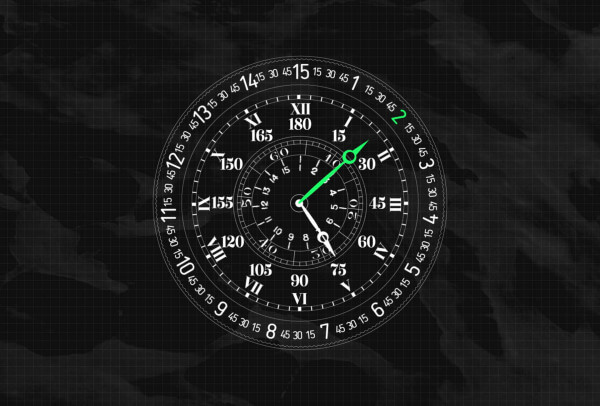
Reading off the hour angle
To measure the observer’s position with the Longines Hour Angle watch, the time displayed on the dial at the moment of measurement must be transformed into degrees, minutes and seconds of arc. The degrees appearing beneath the Roman hours numerals are read off at the tip of the hours hand.

Finally, to refine the exact point in question, all one need do is read off the large-size numeral on the scale graduated from 1 to 15 on the bezel (with one hour corresponding to 15° longitude and the circumference of the Earth to 360°). The hours are read off in full hours (10:40 = 159° and 45’), while seconds of arc are read off on the subdivisions and the internal numbering of the rotating disc.









